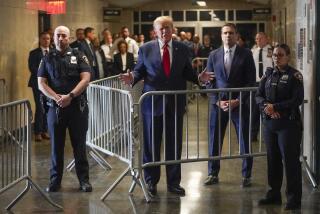Editorial: Santa Monica can’t be a slumlord to its airport for the next decade

For decades, the city of Santa Monica has been at loggerheads with the federal government over the use of the city’s general aviation airport. Whether it sought to curtail jet traffic or completely take over the airport from the Federal Aviation Administration, the city has lost most of its battles. So when the FAA announced in late January that it had reached a court-approved settlement with Santa Monica to relinquish control of the historic 227-acre field at the end of 2028 and allow the city to close it down, pilots and aviation enthusiasts were stunned.
During the prolonged legal fight, we strongly supported keeping the airport open as a vital part of the regional air transportation system. Our money (figuratively speaking) was on the FAA to prevail. But a 9th Circuit decision last year that revived the city’s effort to reclaim the land gave the FAA pause and prompted negotiations that led to the settlement. Now, the city gets its fervent wish to close down the airport. It just has to wait 12 years. The FAA, meanwhile, gets the certainty of operating and regulating air traffic at the airport — without Santa Monica working against it at every turn — in the interim.
That’s not the best long-term result for the recreational pilots, business travelers, medical personnel, and volunteers on goodwill missions who accounted for the nearly 90,000 take-offs and landings at the airport in 2016. But the agreement offers some benefits — at least for 12 years — to the airport’s patrons.
Obviously, if you don’t feed something, it starves.
On the up side, the settlement agreement compels the city to stop its petulant, “If you won’t let us close the airport, we’ll just make it miserable to use” approach to running the facility. As long as the airport is open, the city must run it in a reasonable fashion. It must offer services to aviation tenants, chief among those being reasonably priced gas.
City manager Rick Cole says the city intends to live up to the agreement. “We will not starve the airport,” he says. That would be encouraging to hear, except that he adds, “we will not feed the airport.” Obviously, if you don’t feed something, it starves. The city doesn’t have to act like the airport is a prized shopping mall. But it shouldn’t behave like a slumlord, either. And it should not thwart aviation tenants who want to grow and invest in their businesses. Tenants who had been stuck with short, monthly leases should be offered longer ones. Twelve years is enough time for a business to thrive. The city should recognize that.
Empty hangars that are in disrepair should be renovated and then rented out to the dozens of people who have been waiting months or years for a space. And the city should stop renting scarce hangar and office space to new non-aviation tenants. (Cole has pledged to prioritize aviation clients.)
The airport will soon be down to a single fuel provider that charges $8 a gallon — almost twice the price charged at many other California airfields. Cole said that the city will, in a matter of a few weeks, offer lower-priced self-service gas. The city should be held to that promise.
The worst aspect of the agreement is that it allows the airport the right to shorten its 4,973-foot runway to 3,500 feet. The city sought this as a way to deter the larger corporate jets from flying into the airport. That’s a small portion of the airport’s daily traffic, but the larger jets have always rankled city officials who fear they are noisier (in fact, they are quieter than their smaller counterparts) and could cause catastrophic damage if they crashed in the surrounding neighborhoods (which has never happened, although there have been isolated incidents involving smaller prop planes).
The really troubling thing about shortening the runway is that there is no legitimate reason to do it. While smaller jets and prop planes can safely use the shorter runway, they shouldn’t have to. “Any pilot anywhere would always choose the longest runway. To shorten it is disappointing,” said one experienced pilot and flight instructor. City officials say they intend to consult with the FAA on the design of the shortened runway. The best thing the city could do is not shorten it at all.
For the next dozen years, Santa Monica Airport should be a functioning, well-run airport with all the amenities that pilots need. That is the agreement. Santa Monica city officials say they will abide by it. Pilots and the FAA should make sure that they do.
Follow the Opinion section on Twitter @latimesopinion or Facebook
More to Read
A cure for the common opinion
Get thought-provoking perspectives with our weekly newsletter.
You may occasionally receive promotional content from the Los Angeles Times.






